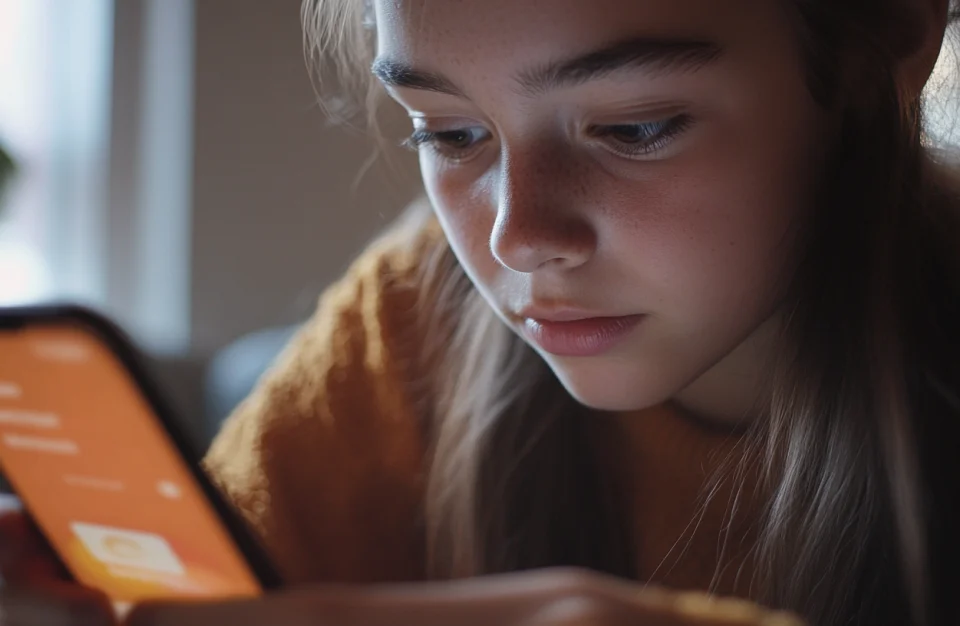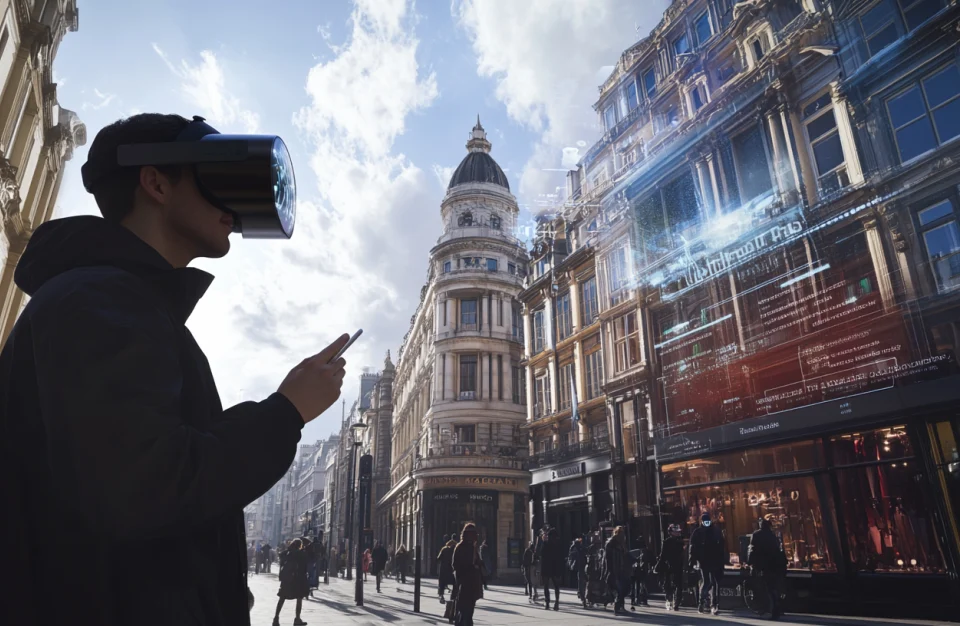
Language Learning Myths: What You’ve Heard vs. What’s True
October 28, 2024
Travel the World Without Leaving Your Couch: How to Immerse Yourself in a New Language from Home
October 29, 2024New innovations are shaping everything from how we connect to how we learn, and language acquisition is riding the digital wave with Augmented Reality (AR) at the helm. Imagine this: stepping into an environment where the language you’re studying surrounds you—vocabulary words popping up as you move through spaces, grammar lessons as interactive visuals, and cultural expressions unfolding in real time. Sounds like science fiction? With AR, it’s here and now!
AR goes beyond traditional learning, taking language learners into a vibrant, interactive experience that blends the virtual with the real. Picture yourself scanning an object with your device and instantly seeing the translation or learning its cultural significance. AR is creating a space where words, phrases, and cultural nuances don’t just appear on a screen; they become part of the world around you, making the language journey feel like a real adventure.
As we dive into the world of AR in language learning, we’ll explore how this tool is reshaping educational landscapes by adding layers of engagement, immersion, and hands-on learning. Whether you’re a beginner or looking to refine your language skills, AR promises to bring the global experience right to your fingertips, making the path to fluency more exciting and accessible than ever. Let’s go!
How Augmented Reality is Changing the Game for Language Learning
We’re thrilled to explore how Augmented Reality (AR) is revolutionizing language learning! Think about it: with AR, learning isn’t just something you do on a screen; it’s something that jumps right into your world. Imagine pointing your phone at a fruit basket, and instantly, translations, pronunciation tips, and fun facts about each fruit pop up in your target language. Not only does this make learning vocab more fun, but engaging multiple senses also means it sticks better—no more endless word lists!
AR also makes cultural immersion possible without booking a flight. Through location-based AR apps, you can explore famous sites and cultural hotspots, learning phrases and historical tidbits along the way. Here are a few ways Langzy is excited about AR’s impact on language learning:
- Virtual Tours: Roam around famous landmarks, guided by your device, and pick up key phrases as if you were actually there.
- Interactive Flashcards: Forget static cards; our animated flashcards show words in action, making it easy to see them in context and remember them.
- Storytelling Games: Play language-based puzzles that encourage conversation, letting you practice new phrases naturally while having a blast!
At Langzy, we see AR as more than a tech trend—it’s a new path to make language learning exciting, immersive, and tailored to real-life contexts. We believe that by combining fun and cultural depth with real-time language practice, AR brings you closer to fluency in ways that make learning a joy! Ready to dive in?

Boosting Vocabulary Retention with Fun AR Experiences
We’re all about making language learning exciting, and with Augmented Reality (AR), that vision is becoming a reality! Imagine stepping into a room where every object around you sparks a new word or phrase, transforming your everyday environment into a vibrant learning playground. AR empowers you to interact with your surroundings in a way that makes vocabulary acquisition not just fun, but also a hands-on experience. By layering digital information over the physical world, you can engage with words in context, making it easier to remember their meanings through visual cues. This dynamic interaction turns abstract concepts into tangible experiences you can relate to.
Integrating AR-driven activities into your language journey can significantly enhance how you retain what you learn. Here are some exciting techniques we love at Langzy:
- Word Hunts: Picture this—a treasure hunt where you discover words hidden around you! This active engagement reinforces your memory in a way that feels like play.
- Interactive Flashcards: Forget boring, static cards! With AR apps, point your device at physical cards, and watch as animations and contextual info come to life, transforming rote memorization into an immersive adventure.
- Scenario Simulations: Dive into virtual conversations or real-life scenarios where you can practice vocabulary in context. This boosts both your understanding and recall, making learning feel relevant.
To give you a clearer picture of how different AR solutions can be applied effectively, check out this simple table highlighting various applications and their learning outcomes:
| AR Application | Learning Outcome |
|---|---|
| AR Word Wall | Visual word associations |
| Interactive 3D Models | Conceptual understanding |
| AR Language Games | Motivation and engagement |
At Langzy, we believe that AR is not just a trend—it’s a game-changer in how we experience language learning. By turning your environment into an engaging classroom, AR helps you connect with new languages in ways you never imagined. Are you ready to see the world through a linguistic lens?
Bridging Cultural Gaps: How AR Helps You Learn Language in Context
Augmented Reality (AR) is changing the game in language learning, breaking down traditional barriers and creating deeper connections between learners and diverse cultures. By overlaying digital content onto the physical world, AR turns ordinary vocabulary exercises into engaging, immersive experiences. For example, imagine a student learning Spanish who points their device at a fruit basket and instantly sees the names of each item in both Spanish and English, complete with pronunciation guides. This interactive method not only boosts memorization but also sparks curiosity about the cultural significance of each fruit.
Moreover, AR opens the door to experiential learning, making cultural nuances more relatable. With various AR applications, learners can virtually explore landmarks or attend cultural events right from their devices, immersing themselves in the context where the language is spoken. It’s a whole new way to experience language learning. These applications often include interactive functionalities such as:
- Virtual Tours: Explore historical sites while learning relevant phrases and expressions.
- Localized Scenarios: Engage in role-playing activities that simulate real-life conversations.
- Community Interactions: Connect with native speakers through augmented social platforms.
To illustrate the diverse applications of AR in language studies, consider the following table:
| AR Application | Language Skill Enhanced | Cultural Aspect Highlighted |
|---|---|---|
| AR Vocabulary Cards | Vocabulary Acquisition | Everyday Objects |
| Interactive Maps | Geographical Context | Local Traditions |
| Cultural Storyteling Apps | Listening & Speaking | Folklore & Myths |
This innovative blend of learning and culture not only enriches the educational experience but also prepares students to engage thoughtfully and respectfully with the world around them. By utilizing AR’s capabilities, educators can craft lessons that are not just informative, but also transformative, breaking down cultural barriers and fostering global citizenship.
Easy Tips for Using AR Tools in the Classroom and at Home
To effectively incorporate augmented reality into language learning, educators and learners alike can benefit from a few practical strategies. First, select engaging AR applications that align with the curriculum or personal learning goals. Popular platforms like Google Expeditions or Quiver provide interactive experiences that can enhance vocabulary retention and cultural understanding. It’s essential to set clear objectives for each session, ensuring that both teachers and students recognize how the use of AR tools can facilitate language acquisition. Consider implementing hands-on activities; for example, utilizing AR to explore new environments can encourage students to practice speaking and listening skills in context.
In self-study scenarios, learners can maximize AR tools by integrating them into their daily routines. Here are some tips for using AR independently:
- Utilize AR flashcards to reinforce vocabulary in a fun, interactive way.
- Create virtual tours of significant locations in the target language to immerse yourself in cultural learning.
- Set personal challenges or goals linked to AR activities, such as daily vocabulary quizzes or speaking exercises.
Combining these techniques with consistent language practice can lead to significant improvements in language proficiency. Keeping up with current AR trends and continually exploring new applications will also enhance the overall learning experience.
Ready to dive in?
At Langzy, we’re thrilled about the fusion of Augmented Reality (AR) with language learning! This powerful combination opens up a world brimming with potential and excitement. As we explore this innovative landscape, it’s clear that AR is not just enhancing the educational experience but also transforming how learners engage with new languages.
Imagine stepping into a world where vocabulary comes to life right before your eyes! AR bridges the gap between the digital and physical realms, allowing you to interact with words in a way that nurtures cultural understanding and fosters practical language use in real-time contexts. Whether you’re chatting with a virtual native speaker or pointing your device at objects around you to reveal their names and uses, learning becomes an adventure filled with exploration and discovery.
The journey of language acquisition evolves into an interactive quest, empowering everyone to communicate with confidence. And as technology continues to evolve, one thing is crystal clear: the future of language learning isn’t just about memorizing words and mastering grammar. It’s about immersive experiences that ignite curiosity and enthusiasm for new cultures and languages.
So whether you’re a teacher inspiring your students, a student diving into your first foreign language, or a language enthusiast eager to explore, the horizon of AR in language learning beckons you to step forward. Get ready to engage with the world in ways you’ve yet to imagine—because the adventure is just beginning!






